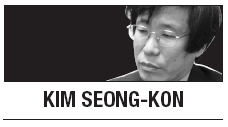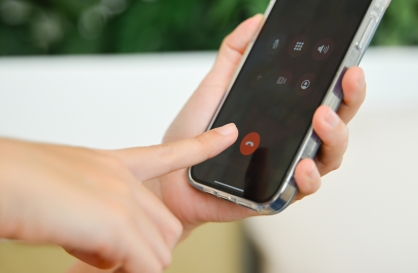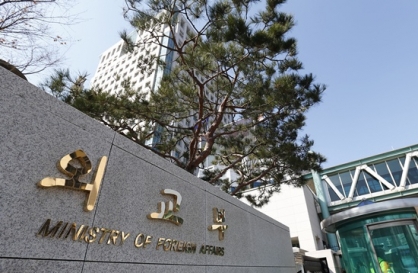[Kim Seong-kon] Ex-presidents and looking at things upside down
By Korea HeraldPublished : April 8, 2014 - 20:47
A few days ago, I went to the Korea National Diplomatic Academy at the Ministry of Foreign Affairs to give a lecture on American culture to high-ranking government officials. Walking toward the lecture hall, I saw a huge world atlas hanging on the wall. Interestingly, the map was upside down, so Australia was up above and Russia was down under. The unconventional map provided me with a whole new perspective of perceiving the world. Below the map was an intriguing caption: “Looking at the world upside down, we can see the future of Korea.”
 Scientists say that it is gravity that creates the notion of up and down. If we are in space where there is no gravity, we will lose the sense of up and down. Only when we are in the earth’s atmosphere, we struggle with the issue, “Which side is up and which side is down?” Indeed, transcending the gravity of our conventional thought will surely enable us to perceive things in different angles and perspectives.
Scientists say that it is gravity that creates the notion of up and down. If we are in space where there is no gravity, we will lose the sense of up and down. Only when we are in the earth’s atmosphere, we struggle with the issue, “Which side is up and which side is down?” Indeed, transcending the gravity of our conventional thought will surely enable us to perceive things in different angles and perspectives.
One example of looking at things differently is how to assess our ex-presidents. Generally speaking, the Korean people are cynical about their political leaders. Instead of acknowledging their abilities and achievements, Koreans tend to disparage their accomplishments and deride them accordingly. As a literary critic, I, too, have always been in the swim, often reducing our ex-presidents simply as funny caricatures. Looking at the upside-down world atlas, however, it suddenly occurred to me that maybe we needed to appraise our ex-presidents more positively, free from black and white judgment.
Syngman Rhee, for example, has long been criticized as a pro-American dictator ousted by the April 19 Student Revolution. Yet Rhee should be reevaluated as a leader of superb diplomatic skill. Contrary to popular belief, Rhee was not obedient to the States. For example, Rhee embarrassed Washington by releasing prisoners of war without an advance notice and by strongly demanding a military alliance and aid when Washington decided to pull back its troops from the Korean Peninsula. In times of crisis, Rhee was indeed an able man who pulled the diplomatic strings skillfully for national interest.
Park Chung-hee was called “Korea’s Strongman” who ruled the nation with an iron fist. Nevertheless, when it comes to South Korea’s spectacular economic development called “the miracle on the Han River,” we owe him a lot. Had it not been for Park’s determination to build a highly industrialized nation, South Korea could not have become the affluent society it is today. That is why Park is highly esteemed especially in Southeast Asian countries which want to benchmark South Korea’s economic success.
Chun Doo-whan seized power by ruthlessly crushing students’ demonstrations and the Gwangju uprising in 1980. Nonetheless, he, too, did some good things during his presidency. For example, he abolished the curfew, student uniforms, and many other inconvenient regulations. I was told that it was also Chun who purified the once polluted Han River, so fish could swim there again.
Chun’s successor Roh Tae-woo was nicknamed “another Chun Doo-whan with a wig on,” which meant he was no different from his predecessor Chun and thus did not have any particular color of his own. Yet, scholars of political science argued that Roh accomplished a number of important things such as signing a treaty of amity with Russia and China, implementing a minimum wage system, and expanding the medical insurance system.
In the past, some people jokingly said that Kim Young-sam’s most important achievement during his presidency was the name change from “people’s school” to “elementary school.” But Kim did two crucial things that none of his predecessors managed. One is that Kim arrested two ex-presidents, Chun Doo-whan and Roh Tae-woo, and then sent them to prison. The other is that he eradicated the untouchable military faction called “Hana Hoe.”
Even though popular, Kim Dae-jung had numerous political foes who said that he was responsible for North Korea’s nuclear weapons. It is true that Kim sent an astronomical amount of money to the North under the Sunshine Policy. Nonetheless, no one would deny that Kim significantly contributed to the democratization of South Korea.
Kim’s successor Roh Moo-hyun was loved by his followers but abhorred by his opponents. Even these days, Roh is still blamed for the inconvenience and suffering of so many government officials who had to move from Seoul to Sejong City. Yet, Roh encouraged us by showing that anyone could become president, prime minister or Cabinet ministers.
Critics pointed out that Lee Myung-bak was scared of the massive candlelight demonstrations and thus was reduced to a push-over during his entire presidency. But they agreed that Lee was relatively good at foreign policy and thus able to normalize the relationship between Korea and the United States.
We do not necessarily have to assess our ex-presidents negatively. Despite outstanding flaws, they have accomplished something good in their own ways. Besides, positive assessment of them is good for our mental health because it makes us happy and cheerful.
By Kim Seong-kon
Kim Seong-kon is a professor of English at Seoul National University and president of the Literature Translation Institute of Korea. ― Ed.
 Scientists say that it is gravity that creates the notion of up and down. If we are in space where there is no gravity, we will lose the sense of up and down. Only when we are in the earth’s atmosphere, we struggle with the issue, “Which side is up and which side is down?” Indeed, transcending the gravity of our conventional thought will surely enable us to perceive things in different angles and perspectives.
Scientists say that it is gravity that creates the notion of up and down. If we are in space where there is no gravity, we will lose the sense of up and down. Only when we are in the earth’s atmosphere, we struggle with the issue, “Which side is up and which side is down?” Indeed, transcending the gravity of our conventional thought will surely enable us to perceive things in different angles and perspectives. One example of looking at things differently is how to assess our ex-presidents. Generally speaking, the Korean people are cynical about their political leaders. Instead of acknowledging their abilities and achievements, Koreans tend to disparage their accomplishments and deride them accordingly. As a literary critic, I, too, have always been in the swim, often reducing our ex-presidents simply as funny caricatures. Looking at the upside-down world atlas, however, it suddenly occurred to me that maybe we needed to appraise our ex-presidents more positively, free from black and white judgment.
Syngman Rhee, for example, has long been criticized as a pro-American dictator ousted by the April 19 Student Revolution. Yet Rhee should be reevaluated as a leader of superb diplomatic skill. Contrary to popular belief, Rhee was not obedient to the States. For example, Rhee embarrassed Washington by releasing prisoners of war without an advance notice and by strongly demanding a military alliance and aid when Washington decided to pull back its troops from the Korean Peninsula. In times of crisis, Rhee was indeed an able man who pulled the diplomatic strings skillfully for national interest.
Park Chung-hee was called “Korea’s Strongman” who ruled the nation with an iron fist. Nevertheless, when it comes to South Korea’s spectacular economic development called “the miracle on the Han River,” we owe him a lot. Had it not been for Park’s determination to build a highly industrialized nation, South Korea could not have become the affluent society it is today. That is why Park is highly esteemed especially in Southeast Asian countries which want to benchmark South Korea’s economic success.
Chun Doo-whan seized power by ruthlessly crushing students’ demonstrations and the Gwangju uprising in 1980. Nonetheless, he, too, did some good things during his presidency. For example, he abolished the curfew, student uniforms, and many other inconvenient regulations. I was told that it was also Chun who purified the once polluted Han River, so fish could swim there again.
Chun’s successor Roh Tae-woo was nicknamed “another Chun Doo-whan with a wig on,” which meant he was no different from his predecessor Chun and thus did not have any particular color of his own. Yet, scholars of political science argued that Roh accomplished a number of important things such as signing a treaty of amity with Russia and China, implementing a minimum wage system, and expanding the medical insurance system.
In the past, some people jokingly said that Kim Young-sam’s most important achievement during his presidency was the name change from “people’s school” to “elementary school.” But Kim did two crucial things that none of his predecessors managed. One is that Kim arrested two ex-presidents, Chun Doo-whan and Roh Tae-woo, and then sent them to prison. The other is that he eradicated the untouchable military faction called “Hana Hoe.”
Even though popular, Kim Dae-jung had numerous political foes who said that he was responsible for North Korea’s nuclear weapons. It is true that Kim sent an astronomical amount of money to the North under the Sunshine Policy. Nonetheless, no one would deny that Kim significantly contributed to the democratization of South Korea.
Kim’s successor Roh Moo-hyun was loved by his followers but abhorred by his opponents. Even these days, Roh is still blamed for the inconvenience and suffering of so many government officials who had to move from Seoul to Sejong City. Yet, Roh encouraged us by showing that anyone could become president, prime minister or Cabinet ministers.
Critics pointed out that Lee Myung-bak was scared of the massive candlelight demonstrations and thus was reduced to a push-over during his entire presidency. But they agreed that Lee was relatively good at foreign policy and thus able to normalize the relationship between Korea and the United States.
We do not necessarily have to assess our ex-presidents negatively. Despite outstanding flaws, they have accomplished something good in their own ways. Besides, positive assessment of them is good for our mental health because it makes us happy and cheerful.
By Kim Seong-kon
Kim Seong-kon is a professor of English at Seoul National University and president of the Literature Translation Institute of Korea. ― Ed.
-
Articles by Korea Herald




![[Weekender] Korean psyche untangled: Musok](http://res.heraldm.com/phpwas/restmb_idxmake.php?idx=644&simg=/content/image/2024/05/02/20240502050841_0.jpg&u=)

![[Eye Interview] 'If you live to 100, you might as well be happy,' says 88-year-old bestselling essayist](http://res.heraldm.com/phpwas/restmb_idxmake.php?idx=644&simg=/content/image/2024/05/03/20240503050674_0.jpg&u=)











![[Herald Interview] Director of 'Goodbye Earth' aimed to ask how we would face apocalypse](http://res.heraldm.com/phpwas/restmb_idxmake.php?idx=652&simg=/content/image/2024/05/03/20240503050732_0.jpg&u=)
